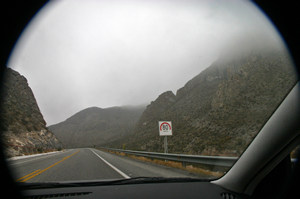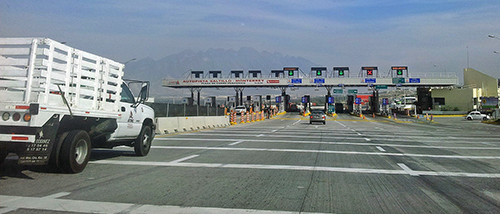Mexico Driving - City Driving and Autopistos
- Last Updated: September 20, 2013 by Al Barrus
- Categories:
- Driving to Mexico, Safety
 I battle with the hectic congestion of Mexico's urban traffic on a daily basis. The cities are densely populated. Many of the downtown areas, along with their cobblestone roads, were constructed hundreds of years before the advent of the automobile—unlike many of the new cities of the Western United States.
I battle with the hectic congestion of Mexico's urban traffic on a daily basis. The cities are densely populated. Many of the downtown areas, along with their cobblestone roads, were constructed hundreds of years before the advent of the automobile—unlike many of the new cities of the Western United States.
Like any city traffic environment you need to have your wits about you in order to not only get where you're going, but also to avoid accidental vehicular suicide or homicide. It can be exciting!
The lanes will very often scoot over a few feet after an intersection. There's no exact way to deal with this problem, but it's important to try and make eye contact with your fellow motorists.
Automobile operators, pedestrians and just the culture in Mexico are very warm, and people like to help where they can. If you need to merge in somewhere during a stop light, give a friendly wave to the person who has the chance to give you that in. People will almost never deny you this common courtesy.
Watch out for the speed bumps or "topes" throughout the cityscape. Lacking the rule of law that resides north of the border, speed zones in Mexican cities are often controlled with these asphalt lumps which, if you don't approach them correctly, could cost you some physical damage to your prized motorized carriage.
Pedestrians deserve an article on their own. People on foot don't always use marked crossing points, plus there are the small-business people working their trade on the busy streets. Mexico's streets are full of very industrious and self-fulfilling entrepreneurs. As soon as you cross the border you will see street venders trying to peddle wares at stop lights and points of congestion.
The working poor in Mexico comprise a big chunk of the population, and they know that people who can afford to own an automobile and buy gasoline have a comparably disposable income. If your windshield needs washing, a peso or two is an acceptable tip. Many of these people are desperate so make sure your wallet and cellphone aren't within grabbing radius.
 If want to get through areas quickly and unmolested, Mexico has a paid option—toll roads or autopistos—that allow one to avoid the crowded traffic and the street folk. You can expect to pay about 60 pesos or five U.S. dollars per hour of highway driving for a regular two-axle vehicle.
If want to get through areas quickly and unmolested, Mexico has a paid option—toll roads or autopistos—that allow one to avoid the crowded traffic and the street folk. You can expect to pay about 60 pesos or five U.S. dollars per hour of highway driving for a regular two-axle vehicle.
South of the border there are also un-tolled freeways that run parallel to the paid autopistos, and they're great for getting a unique Mexican road experience, but they oft times have many potholes, beggars and dangerous commercial truck drivers. I've heard tell that a company will give commercial drivers money to pay for the tolls in order to make it to the destination quicker, but he will pocket the money and drive dangerously faster on the free roads to make up the time.
In Mexico there's no need to pay for road-side assistance. That's a public service provided to all motorists by an organization known as "The Green Angels" or "Los Angeles Verdes". If you're broken down on the highway you can use a cell phone to make an emergency call to the Green Angels by dialing *078.
Always remember adventurous motorists: mind the laws, drive courteously and with caution, and buy your insurance before crossing the border!